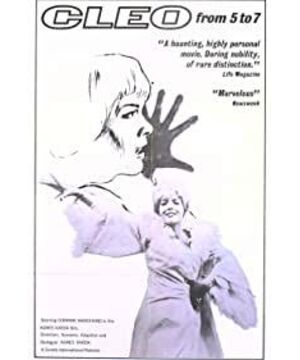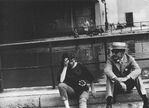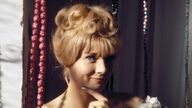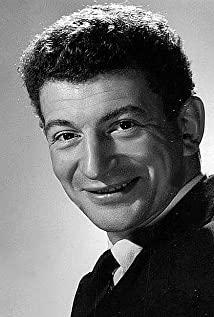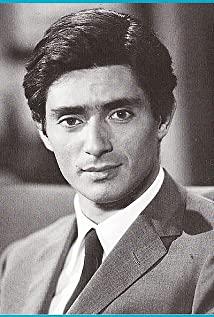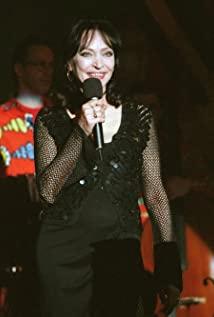"Cléo de 5 à 7" (Cléo de 5 à 7), filmed in 1962, was directed by Agnès Varda, who is still active in the film industry. Face, Village also attracted the attention of many people. The representative work "Cleo from 5 to 7:00" focuses on the 1.5-hour period from 5:00 to 6:30 pm on the day of the Lixia season. During this 1.5-hour period, the singer Cleo, who is suspected of being terminally ill, has The heart has undergone a change from fear and anxiety to sudden enlightenment, and the 90-minute "real time", the method corresponding to the 90-minute film duration, and the color pictures that only have a few minutes at the beginning have also become the focus of later discussions. .
Aside from many discussions, the "mirror" with reflective effect, the vertical separation in different places, and the daily street scene of Paris in the lens, which appeared many times in the film, attracted my attention. The following discussion will focus on them. If there are mistakes or omissions, please point them out.
The first time the mirror appears in the movie is when Cleo "confirms" that he is terminally ill in the information provided by Cleo from reading the woman's tarot cards. Sad, she began to cry in front of the mirror, and then she went downstairs to leave the fortune-telling room, and muttered to herself, who was reflected in the mirror in the corridor. The heroine pays too much attention to her own characteristics, which can also be seen here.
Later, the scene of the heroine Cleo and the mirror frequently appears in the movie.
Cleo, who left the fortune-telling house and came to the cafe to meet the maid, was sitting behind a large glass, creating a very interesting space scene and picture composition - the camera first aimed at the two, and then It is a close-up of Cleo starting to cry in front of the mirror, followed by the frontal monologue of the maid and Cleo turning her back; while the maid is wiping Cleo's tears, the young couple next to him appear at the edge of the frame, and in the mirror are Look at Cleo and her coffee shop manager and waiter, as well as the city street scene where people come and go.
When the camera cuts to Cleo and the young couple next to him, the painting is very interesting: one side is the anxious Cleo, the other side is the couple discussing, and the conversation of the couple caught Cleo's attention and watched from time to time, The separation of the two groups of figures is the edge of the mirror.
After leaving the cafe, Cleo and the maid came to the hat shop, where there were small square mirrors hanging in different positions. Unlike the big mirror in the cafe, when Cleo is facing the mirror, the reflected image is almost only herself (because the size of the mirror is too small, the surrounding environment is difficult to enter), which makes Cleo in the mirror different from the mirror. The surrounding environment produced a certain detachment. In addition, because there are many mirrors in the store, the front, back, left and right mirrors reflect scenes in different positions, and the space is also enriched.
When the camera recedes to the outside of the shop window, the glass of the window also becomes a "mirror", and the interior Cleo interweaves with the reflected noisy city, creating a superposition.
After buying the hats, the two took a taxi back to Cleo's residence. There are also various mirrors in different positions of the room, roughly within the scope of Cleo's activities, and he can see himself in the mirror as far as he can see. pay attention to.
Immediately afterwards, after changing into black clothes and leaving the room, Cleo chose to go out for a walk. In the later episodes, mirror-related scenes include: Cleo's stop in front of the Chinese restaurant "Jinta Hotel", when his friend Dorot's vanity mirror accidentally fell to the ground, Cleo saw the debris in the The self, the self who appeared in the glass pierced by bullets on the street, etc., will not be expanded here.
In contrast, there are two taxi rides before and after the film - once Cleo and the maid return home from the hat shop, and once Cleo takes his friend Dorot home and continues the ride Go to the park. In the two taxis before and after, the small mirror in front of the driver's seat is also very interesting. There is a difference in position, the first time it hangs on the bottom of the glass, the second time it hangs on the top of the glass, I don't know if Varda did this on purpose (it is not excluded that I have It has been explained in the previous paragraph), but this treatment does bring about a different effect - the mirror hanging at the bottom reflects the driver's face and eyes, making Cleo in an atmosphere of "being noticed"; The mirror on the top, because of its position, can only reflect on the male driver's forehead and the parts of his eyes that are not facing the camera. Such a picture is consistent with Cleo's psychological changes and self-awareness.
There is no doubt about the effect brought by the repeated use of mirrors. And in the mirror in the cafe at the beginning, if you pay a little attention, whether it is Cleo and the couple next to him discussed above, or Cleo and the maid, there is a "vertical line" between different characters. In the following plot, the vertical separation formed by other objects, the compositional influence, the effect of the relationship between the characters, and the instantaneous change of the spatial relationship are also wonderful, and people can't help but praise Varda.
In this regard, the embodiment in Cleo's room can be described as outstanding - the pillars in the room, the piano, the swing, the bed frame all play this role in the shot. The bed frame, in particular, has become an important element of character relationships and activities. When Cleo changed his clothes and was about to go out, he had a few dozen seconds of conversation with the maid. The two pillars in the center of the room were full of important scene tools.
After Cleo went out, the vertical separation scene also appeared many times. For example, Cleo stopped in front of the mirror in the Chinese restaurant, he came to the mosaic pillar next to the cafe when he sat down, and Cleo saw the artist on the street. Performing scaffolding while running with an unwell face after piercing the arm. Although the elements that constitute the vertical separation are different, what they have in common is the separation of Cleo's "framed scene" from the outside environment and crowd.
When Cleo and his friend Dorot came out of the sculpture room and got into the car, although they didn't know it was Varda's arrangement, it was an impromptu scene on the street at that time. When the two were chatting, a man next to them opened the room. The door leaves of the street make the single depth space of the street, and the level becomes interesting.
Then, the two came to Dorothe's boyfriend's movie room, where the windows and the walls were separated when watching silent films, explaining the relationship between the characters.
After saying goodbye to Dorot, Cleo accosted a soldier who was about to return to the battlefield in the park. After some conversation in the park, the two took a bus to the hospital to confirm Cleo's medical report. In this process, there are also many vertical separations. The relationship between the characters, when they are in different positions in the composition, also has some subtle changes - from the park, they are on both sides of the vertical separation of saplings, to when the two are in the bus, they are sometimes on the same side of the vertical separation. From time to time, the two sides were intertwined and changed, and then the two were sitting in the garden of the hospital, in the middle of the vertical trees on both sides. At this time, Cleo had basically let go of the original fear and anxiety, only the doctor appeared. State the final inspection results.
More than that. Another fascinating aspect of this film is that in Varda's lens, the streets of Paris in the 1960s flow out. Whether Cleo is walking on the street, driving with his friend Dorothe, or taking a taxi or bus, the scenery of Paris and the pedestrians on the street occupy a considerable amount of space. In some film reviews, some people asked why Cleo and Dorot were so low in the picture when they were driving down the street. My private guess is that Varda set the height of the lens to the eye level of pedestrians on the street, hoping to leave more pictures to the city street scene of Paris.
Similarly, the close-up of pedestrians on the street has also appeared in Varda's lens many times, showing the traces of the documentary. In particular, I like the scene of pedestrians met by Krau after leaving the cafe alone, and the scene of intertwining with acquaintances (objects) such as maids, composers, lovers, wigs, etc. I personally like it very much. It is worth mentioning that the acquaintances here are all face-to-face symmetrical portraits, just like ID photos, which create a tension and seriousness in the picture, and describe Cleo's inner unease in profile.
In addition, what Cleo saw on the street when he was sitting in the car and waiting for his friend to pick up something, the photography in the lens was also very beautiful. Perhaps, this is not unrelated to Varda's identity as a photographer.
In the 90 minutes of Varda, we saw Cleo's 5:00-6:30 pm, Paris's 5:00-6:30 pm, and this is not our 5-6:00 pm Half?
Written at the end: Personally, I like this film by Varda very much, but I am ashamed to say that I have seen very few of her films. Therefore, the length of the above discussion does not rule out that I am just talking nonsense in a serious manner. If there are any mistakes or omissions, please also understand Varda's bean friends to point out, I would be very grateful.
View more about Cléo from 5 to 7 reviews


